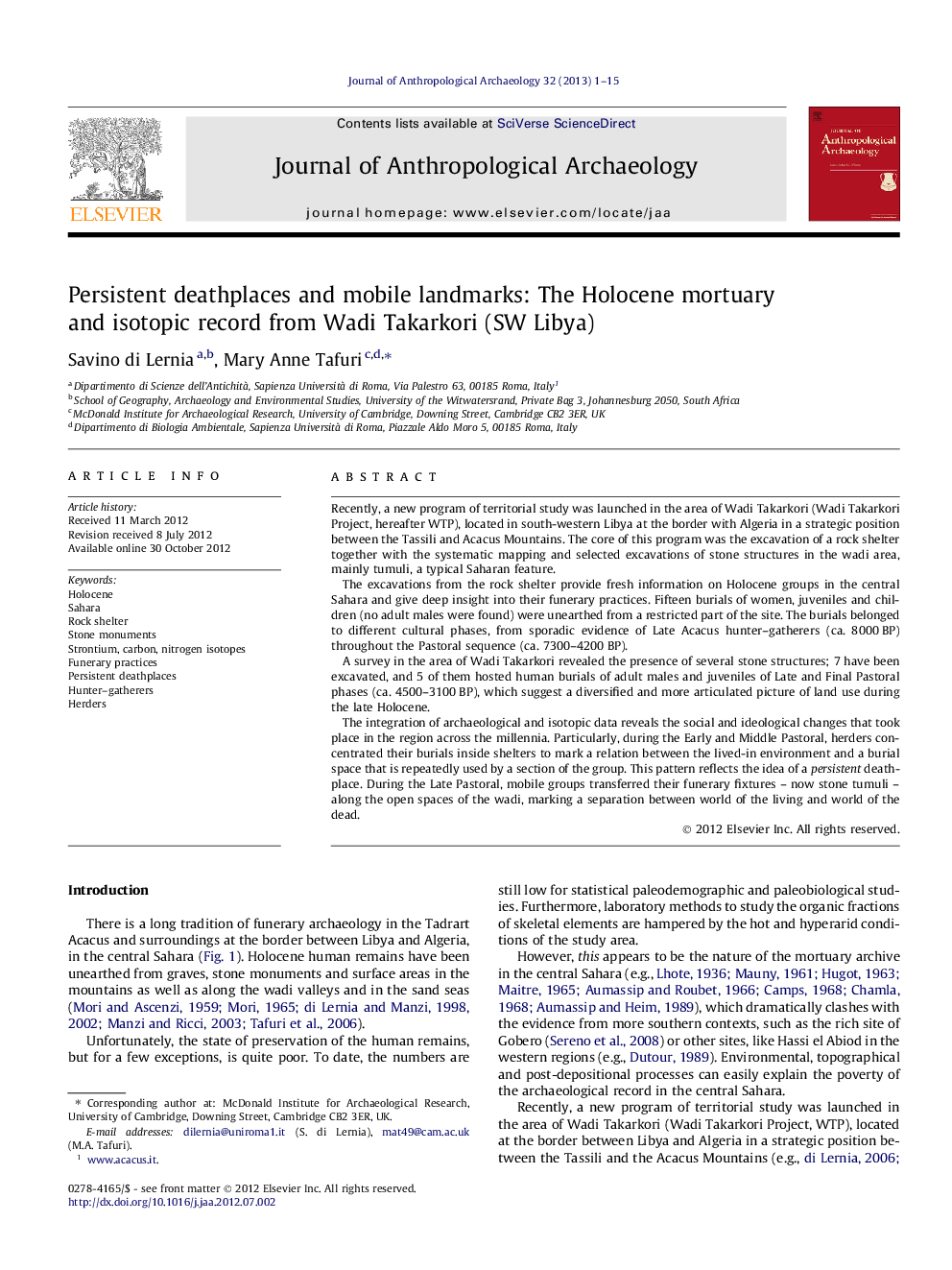| Article ID | Journal | Published Year | Pages | File Type |
|---|---|---|---|---|
| 1034976 | Journal of Anthropological Archaeology | 2013 | 15 Pages |
Recently, a new program of territorial study was launched in the area of Wadi Takarkori (Wadi Takarkori Project, hereafter WTP), located in south-western Libya at the border with Algeria in a strategic position between the Tassili and Acacus Mountains. The core of this program was the excavation of a rock shelter together with the systematic mapping and selected excavations of stone structures in the wadi area, mainly tumuli, a typical Saharan feature.The excavations from the rock shelter provide fresh information on Holocene groups in the central Sahara and give deep insight into their funerary practices. Fifteen burials of women, juveniles and children (no adult males were found) were unearthed from a restricted part of the site. The burials belonged to different cultural phases, from sporadic evidence of Late Acacus hunter–gatherers (ca. 8000 BP) throughout the Pastoral sequence (ca. 7300–4200 BP).A survey in the area of Wadi Takarkori revealed the presence of several stone structures; 7 have been excavated, and 5 of them hosted human burials of adult males and juveniles of Late and Final Pastoral phases (ca. 4500–3100 BP), which suggest a diversified and more articulated picture of land use during the late Holocene.The integration of archaeological and isotopic data reveals the social and ideological changes that took place in the region across the millennia. Particularly, during the Early and Middle Pastoral, herders concentrated their burials inside shelters to mark a relation between the lived-in environment and a burial space that is repeatedly used by a section of the group. This pattern reflects the idea of a persistent deathplace. During the Late Pastoral, mobile groups transferred their funerary fixtures – now stone tumuli – along the open spaces of the wadi, marking a separation between world of the living and world of the dead.
• A territorial approach elucidates mortuary practices within Holocene herders. • Strontium isotope analysis unveils the existence of persistent deathplaces among the earliest pastoralists. • Mortuary practices together with C and N data disclose differences between earliest and later pastoralists. • In the Acacus Early and Middle Pastoral women and children had exclusive access to the rock shelters as a burial ground. • Late and Final Pastoral stone tumuli mark the separation between space of the living and deathplace.
